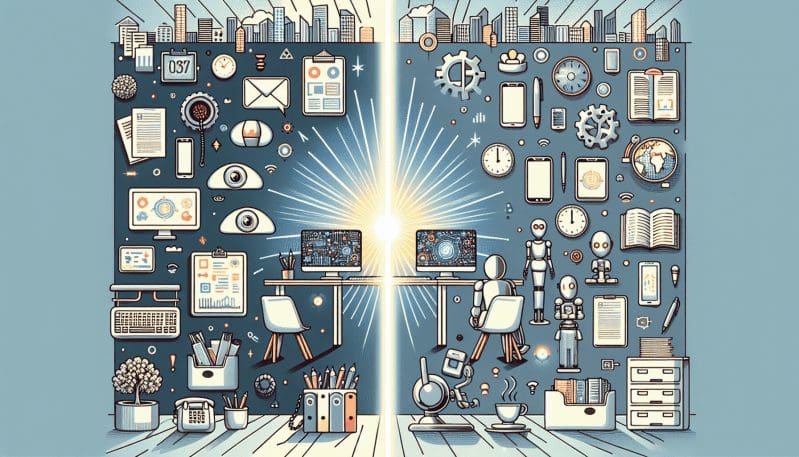The Role of Technology in Shaping the Future of Workplaces: A Blessing or a Curse?
- Home
- The Role of Technology in Shaping the Future of Workplaces: A Blessing or a Curse?

- Editors Desk
- January 11, 2024
- 0 Comments
As the dawn of the Fourth Industrial Revolution casts its glow on the horizon, we find ourselves grappling with a double-edged sword – technology. In its most transformative era yet, the world of work is undergoing a seismic shift. Artificial intelligence, robotics, and other advanced technologies are not merely adjuncts to the workplace but are rapidly becoming central to its very fabric. This represents a duality of potential: an unprecedented leap in productivity and innovation on one side, and a challenging upheaval of traditional employment models on the other. The question that stands before us is monumental: Will technology prove to be a blessing or a curse for the workplaces of tomorrow?
The march of technology has always sparked debates about the future of work, but never before have the stakes felt so high. Artificial intelligence is poised to replace not only menial tasks but also to supplant roles that require cognitive skills. Robotics promise relentless efficiency, but they also bring the specter of job displacement. As tasks become increasingly automated, the very nature of work is being redefined.
The opportunities are considerable. Technology can liberate workers from mundane and repetitive tasks, freeing up human creativity and problem-solving potential. It can create new industries and job categories as yet unimagined, much as the internet did a mere few decades ago. Connected workplaces could enhance collaboration and break down geographical barriers, fostering global cooperation.
Yet, there are risks that cannot be overlooked. As automation becomes more widespread, a significant portion of the workforce may find their skills outdated or irrelevant. This could lead to increasing unemployment or widening the income gap between those who can adapt and those who cannot. Societies must consider the implications of a labor market that prioritizes proficiency in advanced technology and the potential marginalization of those without access to the necessary education or resources.
Companies and labor unions have a shared responsibility to navigate these turbulent waters. They must work hand in hand to manage the transition, to ensure the workforce is prepared for the changes to come. This includes investing in training and re-skilling programs to help workers adapt to new roles that technology will inevitably bring. Proactive strategies must be developed to identify areas where job growth is likely and to guide the labor force toward these opportunities.
Importantly, there is a pressing need to establish ethical guidelines and regulations specifically tailored to protect workers in a technologically advanced labor market. As machines take on more human tasks, questions surrounding privacy, data security, and the very definition of ‘work’ must be addressed. It is imperative that we steer the technological revolution in a direction that not only enhances economic efficiency but also promotes social welfare and job satisfaction.
In conclusion, as we teeter on the precipice between two eras – the industrial and the information age – the role of technology in shaping the future of our workplaces cannot be understated. It holds the power to revolutionize our work and bring about unparalleled prosperity. Yet, left unchecked, it also bears the potential to exacerbate inequality and erode the fabric of our workforce. The path we tread must be one of cautious optimism, embracing technology’s gifts while vigilantly safeguarding the interests and dignity of every worker, ensuring truly that no worker is left behind.

Leave A Comment